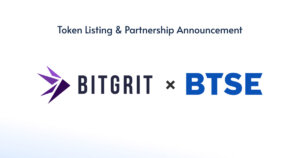 MetaKovan explains why he paid $69 million for Beeple’s NFT artwork
MetaKovan explains why he paid $69 million for Beeple’s NFT artwork MetaKovan explains why he paid $69 million for Beeple’s NFT artwork
NFTs are ten times better than physical art, believes the crypto whale who paid $69 million for one.

Cover art/illustration via CryptoSlate. Image includes combined content which may include AI-generated content.
Vignesh Sundaresan, known only as enigmatic crypto whale MetaKovan until recently, explained his fascination with non-fungible tokens (NFTs) which impelled him to pay $69 million for Beeple’s digital artwork.
“I was saying NFTs are, you know, 10X better than the physical counterpart. One of the things which I really like about NFTs is the fact that it’s composable,” MetaKovan noted in a conversation with the Unchained podcast host Laura Shin yesterday.
On the latest episode of the @Unchained_pod, I asked @MetaKovan why exactly he spent $69 million on a @beeple NFT… since anyone can just see it on their computer.
His response —> NFTs are "10x" better than physical art.
What do you think — is he right, or is that absurd? pic.twitter.com/Si6z6Bfecv
— Laura Shin (@laurashin) March 20, 2021
NFTs are the latest craze in the crypto community. Unlike traditional cryptocurrencies, these tokens allow embedding unique identifying information within them. Being non-interchangeable and unique, some collectors are paying outrageous prices for them lately.
As CryptoSlate reported, Sundaresan has recently bought an NFT artwork created by crypto artist Mike Winkelmann, aka Beeple, for a record price of $69 million. This made the piece, called Everydays: The First 5000 Days, not only the most expensive digital object so far but also the fourth most expensive artwork sold by a living artist.
Speaking to Shin, Sundaresan noted that just like Ethereum’s decentralized finance (DeFi) sector, NFTs are changing the way how our economy works.
“We should understand that it’s very similar to another like DeFi protocols are awesome because they are composable, right. And in the same way, NFTs just on the Ethereum blockchain,” he said, adding, “Now, we can do hundreds of things with them.”
In his opinion, a piece of physical art can be owned by one or three-four people, and it has “that feeling of being owned by one person and kept in one location.”
Creating truly digital ownership
At the same time, while most people in the world have not seen Mona Lisa, for example, in person, but they can recognize it because its images have been replicated.
“Most people don’t believe they own it, right. Like, it does not destroy the value of the physical piece itself just because I have a copy of Mona Lise on my computer or it’s plastered all over the Internet, right?” said Sundaresan.
In the same vein, NFTs “pack the whole story” into them, he added.
“If it’s this piece, it backs the fact that Beeple worked on this for 13 years, it backs the fact that Beeple actually minted this on this time. And it backs the fact that we actually bought it at this time,” he explained.
Sundaresan also noted that NFTs are making the world of art a bit more democratic since emerging technologies allow artists and collectors to bypass traditional and often archaic systems.
“And all of this goes into the NFT and the blockchain, right? And this providence and everything which was historically the auction houses’ major job and what they used to take the maximum cost for—it’s all gone because they are all very simply recorded.”
However, Beeple’s Everydays: The First 5000 Days was still sold via Christie’s—a British auction house founded in 1766—so perhaps we are not entirely there. Yet.



 Farside Investors
Farside Investors 























































































